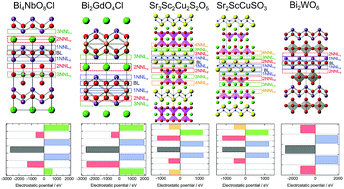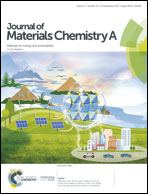Extended layer-by-layer Madelung potential analysis of layered oxyhalide photocatalysts and other layered systems†
Abstract
A recent study on Bi4NbO8Cl and related Bi-based layered oxyhalide photocatalysts using a layer-by-layer Madelung potential (L2MP) analysis with a sphere model revealed that oxide anions in the fluorite-type slab of Bi4NbO8Cl are electrostatically destabilized by the 2nd nearest sublayer composed of the apical oxygen of the perovskite slab. Here we provide an extended L2MP analysis of Bi-based layered oxyhalides using a modified (square-prism) model and apply it to other layered compounds. It is found that consideration of up to the 3rd nearest sublayer is necessary to account for the nearly equal valence band maximum between Bi2GdO4X and Bi4NbO8Cl. Additionally, BiOX and Bi2GdO4X show a distinct X-dependence of the Madelung site potential of oxide anions. The L2MP analysis of Bi2WO6, Sr3Sc2Cu2S2O5 and Sr2ScCuSO3 revealed a sizable contribution of distant layers to their electrostatic potentials. This study demonstrates that this method can be applied to a wide range of layered materials and serves as a powerful guide toward finding composition and layer stacking sequences suitable for photocatalysis and other functions.



 Please wait while we load your content...
Please wait while we load your content...